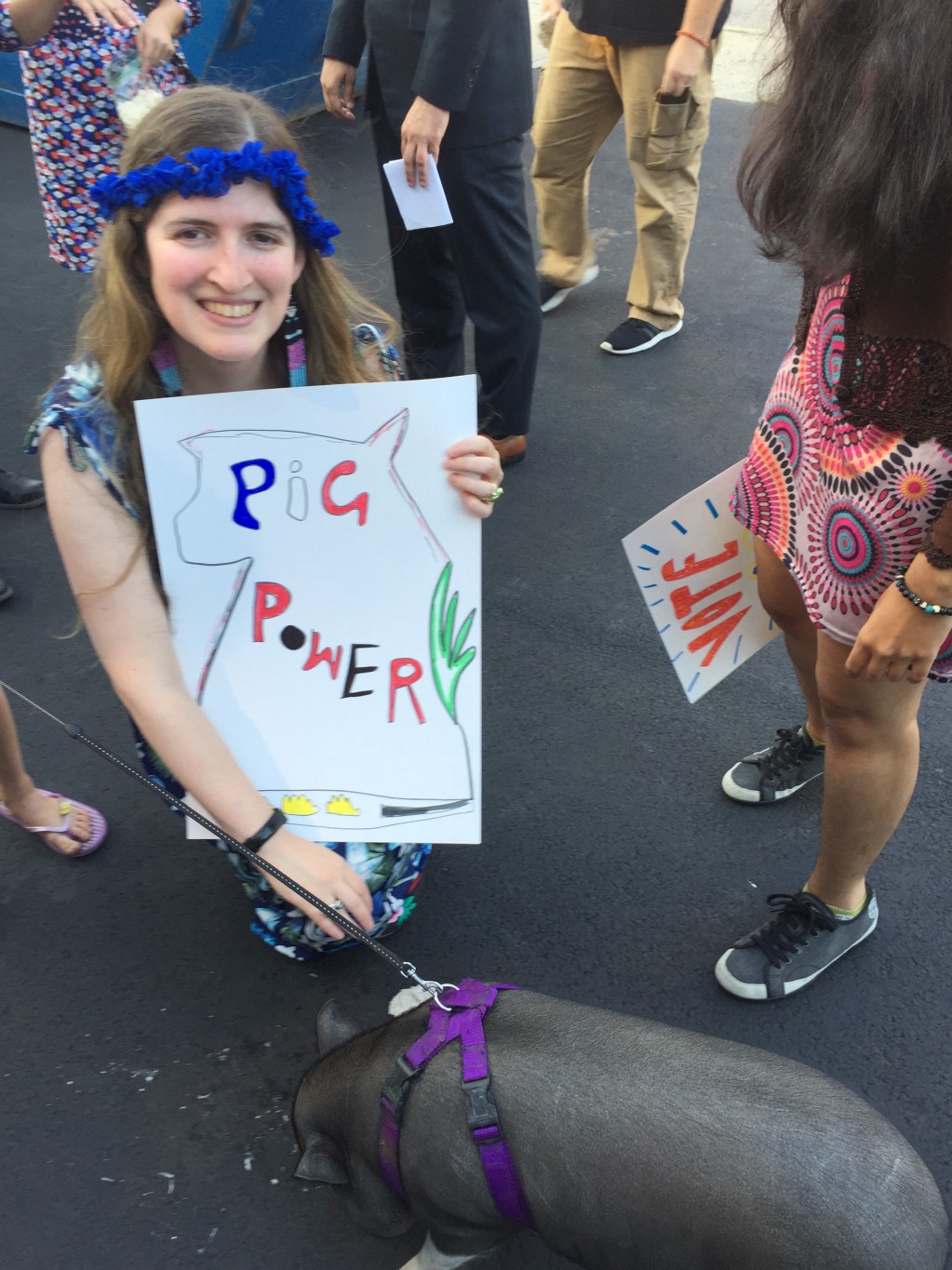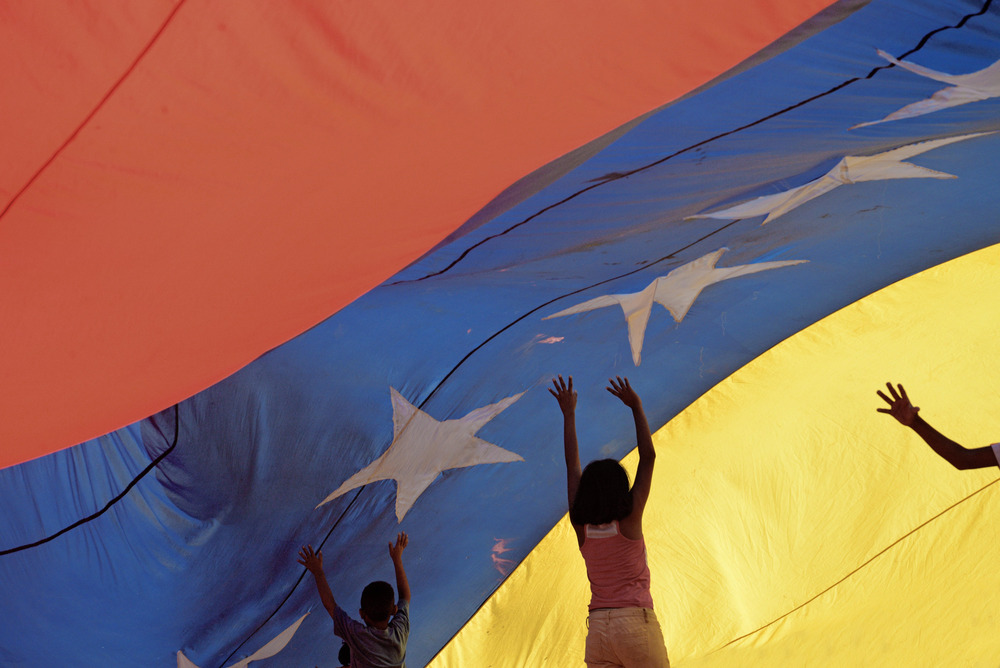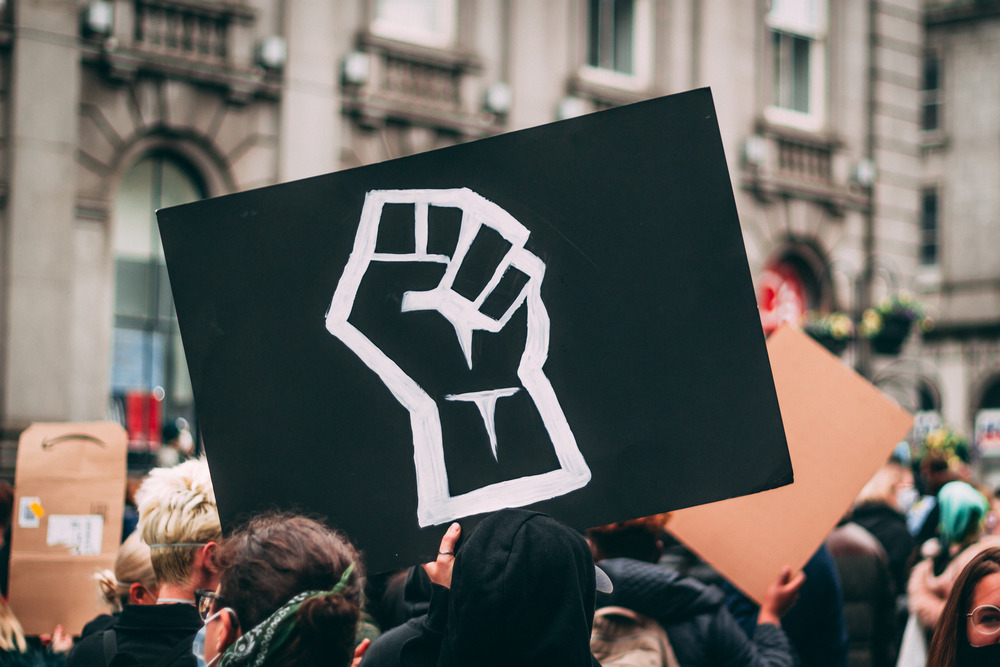Books & Culture
Historical Reenactment Is Cooler, and More Progressive, Than You Think
Bringing overlooked stories into the present also helps us create a new story for our community

The police marched onto the field, waving their batons. The denizens of Streeterville stared back at them defiantly.
Then the first water balloon hit.
Then another hit, and another, until police, Streeterville residents, and spectators were all throwing balloons at each other in 90-degree July heat. It wasn’t an exact reenactment of noted real estate fraud Captain George Wellington Streeter’s fight against police at the turn of the 20th century, but for reenactors (like me) who were wearing a corset, bustle, and petticoats, it was much more pleasant.

This was one of three components of “Like a Secondhand Sea,” a historical celebration of Lake Michigan put on by Paul Durica’s Pocket Guide to Hell: an organization committed to telling the stories of Chicago, often focusing on its social and labor history, through tours or historical reenactments. (The name came from Chicago poet Nelson Algren’s Chicago: City on the Make.)
The first part of the event commemorated the early history of Chicago: explorers Marquette and Joliet navigating the Lake Michigan coastline in 1673. Performers were dressed as traders, with white clothes and animal skins, and “paddled” around the streets of downtown Chicago in modified canoes that strapped on their shoulders like sandwich boards. The second part was the celebration of the raucous Streeterville and the battle with Captain Streeter and the police over the land that would later become hot real estate in Chicago in 1886. Finally, it ended with a brass band to commemorate the Sanitary District’s reversal of the Chicago River in the last decade of the 19th century.
These events are more than just reenactments; they are new ways of envisioning the meaning of history and culture creation. They are not your typical Civil War battle or camping reenactment. Instead, the events commemorate the past with a modern twist, like the balloon fight for Streeterville battle with the police, a dodgeball fight for the Beer Lager Riots, a mock trial to remember a pig’s 1960s run for president, and many more. These reinventions don’t just recall the past — they bring joy and context to these historical occurrences in the current day.
These events are more than just reenactments; they are new ways of envisioning the meaning of history and culture creation.
As a trained historian, I have always been interested in the overlooked stories in history: the stories of the people who showed up to the marches, who made the newspapers, who cleaned up after the meetings. Histories that focused solely on the leaders didn’t interest me terribly. But often, that’s the history that survives. History is written by the victors, but it’s written about the leaders, whether they win or not — people are more likely to record and preserve things that relate to Great Men and Women.
When I started attending reenactments, and later organizing them with my husband, I did it because I wanted to explore and bring to life the forgotten history of ordinary people. But they aren’t just about the past — we are also creating the new history of our city. Whether it’s a balloon fight, a dodgeball game, sing-alongs, or a scandalous gala, historical reinventions bring the audience into the past while also defining the present. Audience members are invited to partake in this lived history so that the tradition and themes continued beyond the parameters of the event. This will be our history once again.
Histories that focused solely on the leaders didn’t interest me terribly. But often, that’s the history that survives.
The first historical event that my husband and I put together was the infamous First Ward Ball, the gala held for the madams, prostitutes, gamblers, and other degenerates of the Levee, Chicago’s vice district in the first decade of the 20th century. This ball was originally hosted by two of Chicago’s most corrupt aldermen, Bathhouse John and Hinky Dink Kenna. My husband, Scott, played the outlandish and bombastic Bathhouse John, poet laureate of the City Council and bathhouse enthusiast. We held it in conjunction with the This is Not a Studio, an apartment art gallery, and the visual artist Julia Haw.
Our new First Ward Ball was held in the second floor theater of a local bar called Fizz. It was to be a joint art show with Ms. Haw’s work and theatrical performance. Despite our scant budget, we found artists and performers to touch on the themes of vice, sin, and corruption. I decided to celebrate the infamous Everleigh Sisters who ran the gilded house of ill repute. I composed poems from the point of view of different prostitutes, called “butterflies” at the Everleigh club, and performed several of their stories on stage. I wanted to bring their stories and experiences to life for the audience.
It was a start to even more mysterious and wonderful roles in different eras of Chicago history. Through these events, we learned even more about the strange and glorious Chicago history, often forgotten in comparison to the histories of New York, Philadelphia, and Boston.
In commemoration of the Beer Lager Riots of 1855, Pocket Guide to Hell held a beer festival and dodgeball fundraiser for Benton House, a social services nonprofit in Bridgeport. Levi Boone, a notorious nativist, was elected mayor of Chicago and pushed through anti-Irish and anti-German laws including laws outlawing the sale of alcohol on Sundays. When beerhall owner and bartenders were arrested, an angry mob formed to march on City Hall to hang the mayor and free their friends. The Mayor heard of this mob, pulled up the bridge separating downtown from the protestors, deputized a large crowd of people, and went to meet the protesters. The two groups met, shots were fired, and some people were dead. The following year, Mr. Boone was voted out of office and the laws were reversed. In order to remember this riot, the fundraiser had people play in the dodgeball game, protestors v. policemen, with very corrupt referees overseeing the game. At the same time, there were beers from local breweries downstairs. The announcer helped contextualize the game by narrating the event.
Ultimately, the event was supposed to be a celebration of Chicago’s scrappiness: we’ll die for our right to drink! Together, we remembered this ugly history in Chicago’s past when immigrant groups were maligned by the people in power and how they tried to fight back. The U.S. has a long history of denigrating its recent immigrants; only the nationality of the immigrants has changed. But what the Beer Lager Riots and the Benton House event try to show us that we are capable of changing the system. While change was brought about through voting the mayor out of office rather than violence, this event reminds us that we can come together, learn some history, play some dodgeball, and drink beer. That power can turn into the power to protest, the power to call out wrongs. Through storytelling and performance, participants were able to see Chicago’s history alongside its present, and decide what that means for our future.
Through storytelling and performance, participants were able to see Chicago’s history alongside its present, and decide what that means for our future.
More recently, the Illinois Humanities festival held The Flight of the Pigasus, commemorating the 50-year anniversary of the Chicago 1968 Democratic Convention protests. In order to poke fun at the government, the Yippies nominated a pig “Pigasus” for president of the U.S. Several original protestors were invited to speak on stage about their experiences with Pigasus and the protests. Reenactors dressed as Yippies and stood behind the stage, while collectively yelling and chanting. To top it off, a live pig named Rudy was brought to the bar to serve as our Pigasus.

Often, historical perspectives on the 1968 Democratic Convention protests focus on the infamous police riot. By focusing instead on the role and eventual fate of Pigasus (allegedly, he was eaten by the cops), we were able to remember the more positive — and sillier — aspects of a protest with long-ranging consequences. Moreover, we got a chance to see the beautiful messiness of history; the three eyewitnesses of the original protest told their stories that intersected and diverged at various points. We were again reminded that we can work as a collective to protest the wrongs that we see and we can even have fun doing it.
For four years, I ran the Jane Addams Day Celebration on December 10th with the American Association of University Women — Illinois in December. Through the help of Jan Lisa Huttner and other AAUW members, Illinois passed Jane Addams Day on June 9th in 2006 for her impact of the state and the rest of the country. For the first two years, I wrote and directed a historical play about Jane Addams and her involvement with the Pullman Strike. It was a combination of historical talk, speeches from historical figures, George Pullman and Florence Kelley, an acrobatic act of an imaginary fight between George Pullman and his striking workers, and culminating in Jane Addams’ speech “A Modern Lear.”
For me, it wasn’t enough to talk about Jane Addams with speeches about her good deeds. I wanted to give the audience a sense of the stakes. The 1894 Pullman strike was the culmination of social and economic forces and a belief in what the worker/employer relation should be. I wanted to talk about Jane’s contributions to ameliorate the strike along with her own presence and style. We even brought back a tradition of “political burlesque” at the time of the strike where events would satirize public figures at the time. The event would end with the Ralph Chaplin’s famous song, “Solidarity Forever” as a way of bringing everyone, audience and performers alike, together.
We are coming together to experience the past; we are there to celebrate the ideals or simply to remember the people who came before us.
And that’s the point of the events. Whether it’s a funeral for a labor activist and songwriter, a water balloon fight, or a dodgeball, these events aim to create community. We are coming together to experience the past; we are there to celebrate the ideals or simply to remember the people who came before us. It’s not just about conveying information, which could be done through a talk or a series of lectures; instead, we want to make the past feel alive, even if it’s a modified way. Reenactments, or more accurately reinventions, of history allow us to interact with other participants and performers and leave with a sense of our shared history. While we all have our own viewpoints and experiences, these historical reenactments make us remember that we are a force to contend with and nothing in history is easily gained.









